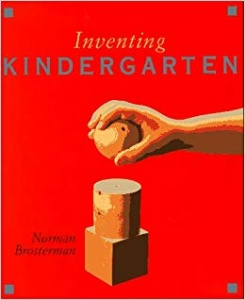Kindergarten Day
Listen to the Recess! Clip
| Author | John Cech |
| Air Date | 4/21/2000 |

Kindergarten Day Transcript
Today is Kindergarten Day, which is celebrated in honor of Friedrich Froebel who was born today in 1782 and who started the first Kindergarten in Germany in 1837. The school was built upon a series of innovative principles that used the innate curiosity and interests of children to guide them to see what Froebel believed to be the harmonious, interconnectedness of all things–through song and play (which was unheard of in earlier schools); daily lessons in drawing, design, and other artistic activities; and learning through active doing and close contacts with the natural world–many of the kindergartens actually had real gardens attached to them that the children tended and in doing so, Froebel believed, cultivated their own inner lives.
By the 1840s, Froebel was even issuing stock in his enterprise, the Universal German Kindergarten, at around ten dollars a share. But the business never made him wealthy–in fact, though the kindergarten idea spread throughout Germany in the mid-19th century, it was fiercely resisted by the autocratic Prussian state, which essentially outlawed it in 1851 because it was believed that Kindergartens promoted democratic ideas that were dangerous to the rigid status quo. Froebel would die a year later, in 1852–some say of a broken heart.
As Norman Brosterman reports in his fascinating book, Inventing Kindergarten, by 1860, even the Prussian authorities relented and allowed this highly popular new form of schooling to continue. The first public American Kindergarten was opened in 1873 in St. Louis. By 1876, at the Centennial Exposition in Philadelphia, there was a model kindergarten for inspection on the grounds at Fairmont Park. One visitor, Mrs. Anna Wright, was so taken with what she saw that she bought a set of what were called Froebel’s gifts–the blocks and balls, sticks and geometric forms that all kindergartens were equipped with–and took a course of instruction so that she could pass on what she had seen about Froebel’s ideas of beautiful unity to her son, Frank Lloyd Wright. Cubism, the Bauhaus, Taliesin–in fact, a good part of what we see and call “modern,” as Brosterman points out–is arguably attributable to Froebel and the visionary geometries of his children’s garden.